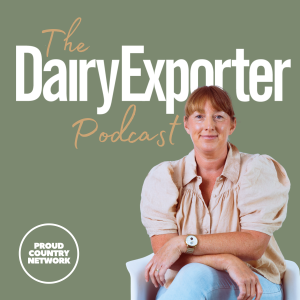
Episode 19 - Reducing fertiliser costs without compromising fertility
 2024-05-23
2024-05-23
It’s no secret that as prices continue to increase across the board, fertiliser has famously gotten more expensive. With the introduction of a wholesale fertiliser company, the market is about to change.
But in the meantime, farmers are looking for ways to manage their fertiliser costs and nutrient footprint - and what are the best ways to do this without breaking the bank? Sheryl Haitana talks to those who have managed to do this successfully, including using variable rate fertiliser applications, and annual soil testing.
Guests include:
- Leonie Guiney, Fairlie dairy farmer
- Patrick Davis, CEO, Catalyst Ag
- Matthew Richards, CEO, Fortuna Group
Hosts:
- Sheryl Haitana, Editor, Dairy Exporter
- Anne Lee, Deputy Editor, Dairy Exporter
- Sarah Perriam-Lampp, Managing Director of CountryWide Media
Fairlie farmer Leonie Guiney keeps on top of fertiliser costs by soil testing every winter. She uses this data to monitor each paddock's individual soil situation to get optimum pasture growth. The benefit of testing in the winter is to reduce the impact of any recent fertiliser applications.
Leonie operates a pasture-based dairy system in Fairlie and says the beauty of the system is it’s simple to run, but it has been a matter of necessity rather than choice.
Australian fertiliser company Marnco is scheduled for arrival in New Zealand early next year. Catalyst Ag CEO Patrick Davis says Marnco’s entry into the market will provide a much-needed dose of competition, which will hopefully make the established companies think about what value they’re providing to their customers.
At the moment there are only two fertiliser companies and Marnco could be a good opportunity to break up the duopoly they hold on the market. Sarah Perriam-Lampp talks to Patrick about what the wholesale model could mean for the existing cooperatives.
Matthew Richards from Southland farm collective Fortuna Groups says nutrient placement is the key to being cost-effective with fertiliser. While Fortuna’s philosophy of variable rate fertiliser didn’t come from a cost-cutting mindset, it has certainly helped maintain a consistent price-point for almost a decade.
Part of their system is monitoring their paddocks, including all paddock soil testing every four years. He says sometimes when times are tough it’s better to invest in testing rather than product, so you don’t spend money on unnecessary product and guessing how much your paddock needs. He says by doing this they’ve made 10-20% savings on fertiliser costs.
SUBSCRIBE TO DAIRY EXPORTER - EMAIL NEWSLETTER (FREE - WEEKLY)
SUBSCRIBE TO DAIRY EXPORTER - MAGAZINE ($59/YR FOR 4 JOURNALS)
See omnystudio.com/listener for privacy information.
More Episodes
Create your
podcast in
minutes
- Full-featured podcast site
- Unlimited storage and bandwidth
- Comprehensive podcast stats
- Distribute to Apple Podcasts, Spotify, and more
- Make money with your podcast
It is Free
- Privacy Policy
- Cookie Policy
- Terms of Use
- Consent Preferences
- Copyright © 2015-2024 Podbean.com






